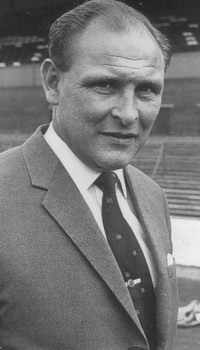|
The Longer View
Last Updated : 13-Apr-2006 byIt is, bluntly, the only way we can compete. The Clarets cannot compete in the heavyweight division by virtue of bulk, because we belong amongst the lightweights in comparison. We are small fry next to the city clubs of Manchester, London, and Liverpool. In order to compete, we cannot simply trade chequebook punches: we must use subtlety, sleight of hand and nimble footwork to overcome our competitive disadvantage.
It can be done. It is not an impossible dream. Yes, if you were considering where to locate a successful football team, you would not choose a low wage community of barely one hundred thousand people squashed between Manchester and Leeds, with a plethora of other football clubs in easy reach. Yes, we must reluctantly accept that the pulling power of Burnley Football Club ain't what it was in earlier, more equal, ages. But that doesn't mean that Burnley should be content to tread water, until fatigue takes over and the club is dragged down.
Once upon a time, admittedly before money dictated the balance of power to the extent that it does today, Burnley were resourceful, and beat the odds. Bob Lord and his managers, Jimmy Adamson, Harry Potts and their predecessors, bought into a common ethos. They played a long game, accepted that they could not buy success, and set about inculcating it from within. They developed a training complex and an attitude to youth development which was ahead of its time. And then they reaped the rewards; won championships, reached cup finals and played in Europe.
It is one of the tragedies of the decline of the club that the approach withered and died, until there was nothing left. It left an empty myth about Burnley as a club which placed high emphasis on producing their own, which was in stark contrast to the trickle of dubious talent which was produced from the mid 1980's onwards. The fact was – we became as bad at growing our own as any club in the league. When we started to take it seriously again, only three or four years ago, we were starting from scratch.
But it is important to trumpet the fact that the Turf Moor hierarchy is taking it seriously once again. It represents a realistic approach to where Burnley are, and where Burnley can go with the right emphasis. The obvious example are Crewe Alexandra, a small club, a basement league club, until they started to produce quality players in numbers which belied their size and status. If Crewe can do it, and establish themselves as a consistent second or third tier performer as a result, why shouldn't Burnley – naturally at home in the Championship – produce the talent to take us above our station?
|
Certainly, results at youth team level have been encouraging for much of this season. And at the end of the season in which the first team ultimately delivered little other than mediocrity, history may judge that the most significant event this season has been the presence of the club in the fifth round of the FA Youth Cup. If this competition is any sort of barometer of pre-eminence in youth football, it has demonstrated the ineptitude of our approach in recent seasons. This season, an admirable adventure and a brave defeat to Liverpool heralds a welcome re-emergence.
The influence of Vince Overson as Head of Youth Development must be one of the chief reasons for the turnaround, and no doubt Overson would be quick to pass on any praise to the army of highly qualified coaches and diligent scouts without whom the system would fall apart. Yet without direction and support from above, their efforts would be futile. Barry Kilby has made some mistakes, but his belief in the importance of a strong youth system should be lauded. He appointed Steve Cotterill as manager in the belief Cotterill would embrace a more youthful philosophy, and thus far, it does not seem misplaced.
Yet, if there is a criticism to be made, it is that not enough is being made of this change of emphasis. When Cotterill signed a new contract recently, it represented an opportunity to advertise a strategy to take Burnley onwards and upwards. It was a chance – one which is not yet lost completely – to emphasise that there is a vision at Burnley. There is ambition, and it lies in building, over time, a club and a team with a soul developed at Gawthorpe. Build a youthful squad with a deliberate policy of blending a few reliable older heads, players of promise picked up from the lower leagues and nurtured, and a few who have come through the ranks.
It may already be the plan – and if so, it is a worthy one. Yet it is not being communicated to the average man on the street. It should be, for any fan who can see beyond the end of his nose would welcome it.
If the lifeblood of a club is hope, then for a club like Burnley, youth development is almost the raison d'etre. If we are not aiming for the Premiership, we might as well pack it all in now. If we are, then, short of a sugar daddy, then there is only one realistic way to get there and stay there.
Not only does it offer the most viable blueprint to success, but success founded on home-grown talent also tastes so much sweeter. Quite aside from the fact that Liverpool would not have been able to afford to buy a centre half of Jamie Carragher's stature and a central midfielder as dominant as Steven Gerrard had they not found them in their own backyard, anyone from the red half of Liverpool will tell you that the fact one of their own lifted the trophy on their behalf was the icing on the cake.
It is though a blueprint that requires patience, especially from the fans. It requires supporters to appreciate what is being done, and to support it. Financially, through initiatives such as the Clarets Mad Year of the Youth, as detailed elsewhere on this site. And also by keeping faith with the philosophy in the knowledge that, ultimately, it will pay dividends.
Good things, as they say, come to those that wait.


